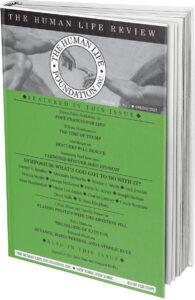A Celebration of Centenarians
Recently, the Italian Statistical Office (ISTAT) published data on the sizable number and relatively healthy status of centenarians living in Italy. With so much negative news concerning various aspects of world population—e.g., the decimation of the nuclear family, low birth rates, and increased suicides—it was nice for a change to come across some good news about life.
According to ISTAT findings, Italy has one of the highest longevity rates in the world: 85 years for women and 80 for men. As in most developed countries, people there are living longer, but it is quite an achievement that so many in Italy are living such very long lives.
In their study, Italian statisticians classified long-living persons into three categories: centenarians (100 years and older), semi-supercentenarians (105 and older), and supercentenarians (110 and older). The primary purpose of their study was to examine the status of the middle category.
As of January 1st of this year, the respective category numbers were: 14,456 centenarians, 1,112 semi-supercentenarians, and 21 supercentenarians. The number of centenarians increased 31 percent compared with 10 years earlier. By 2015 their number had reached an historic high of over 19,000, but then in the past four years fell by about one-third for historical reasons, namely the big decline in births that occurred during the First World War (1914-18).
The trend line going forward is expected to undulate as a result of the Great Depression and World War II, also periods when births declined sharply. However, after these anticipated declines, the number of centenarians is expected to climb sharply as members of the Baby Boom generation (1946-64), the oldest of whom are now in their early seventies, move up the longevity scale.
ISTAT found that most centenarians lived with family members. This likely attests to their relatively good health. Some 85 percent of semi-supercentenarians lived with family; only 15 percent resided in old-age homes. In Italy, senior living facilities, where the elderly live among themselves, are not common. Rather, in urban areas there are meeting facilities where seniors can gather to share each other’s company and engage in various activities.
The ISTAT study also confirmed that women lived longer than men. Among today’s centenarians, 84 percent were women as were 87 percent of those reaching 105; all of the (very few) supercentenarians were women.
The oldest person to die in Italy this year was a woman who expired on June 18 at the age of 116 years and 90 days. Vital statistics records also show that for a while a few years ago Italy had the world’s oldest person: The woman died in April 2017 at 117 years and 137 days. At the beginning of this year, the oldest living person in Italy was a 113-year-old woman who resided in Emilia Romagna, a region in the north central part of the country. The oldest living man to die in the last decade covered by the study passed away in Sicily in 2014 at 111 years and 357 days. During the 10-year period between 2009 and 2019, 125 persons lived to be 110 years or over, and 93 percent of them were women.
Another interesting data point was that more male semi-supercentenarians than female were still married—13.6 percent versus 1.4 percent—a factor attributable to women living longer than men as well as women generally being younger than their partner at the time of marriage.
Why do women live longer than men, and what accounts for longevity? The study doesn’t address the first question, but on the second, many observers point to the four f’s: family, faith, food, and fidelity. The traditional family and family cohesion still prevail in Italy even though divorce rates are rising.
Given there are few day-care facilities in Italy, grandparents generally take care of grandchildren if the parents work outside the home. This allows older persons to remain actively engaged in family life. (The percentage of working-age women in the labor force is one of the lowest in Europe, indicating that it’s likely there are more stay-at-home moms in Italy than in other developed countries.)
As for faith, a 2018 Pew study a few years ago found that Italians were the third highest active churchgoers in Europe. The country’s predominant Catholic faith assists people in dealing with a lot of problems, domestic and otherwise.
There is also much to be said about Italian food. The Mediterranean diet is considered one of the healthiest in the world. Some like to say “You are what you eat”—a healthy diet leads to better quality of life and also seems to contribute to longevity.
Fidelity applies to the other three. Fidelity to faith and family helps marriages last and generates a certain amount of caring and happiness, while a steady diet that includes lots of fruits and vegetables has long-lasting health benefits.
One surprising and remarkable finding of the study is this: The most common names among the semi-supercentenarians were Maria and Giuseppe—Mary and Joseph!









